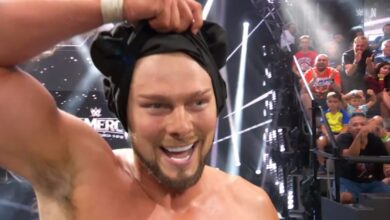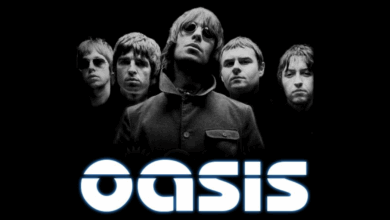Exclusive Analysis: Seth Rollins Return to WWE House Shows Increases Attendance Amid Overall Decline

A few days ago we looked specifically at the house show drawing power of Roman Reigns and Dean Ambrose so far in 2016.
More interesting than the impact of Reigns and Ambrose is that Seth Rollins’ return to house shows, and to a lesser extent, the addition of A.J. Styles, are related to positive differences in attendance that are clearer than any differences house show tour leaders Reigns and Ambrose have made to attendance this year.
Reigns and Ambrose are clearly the two stars WWE has relied on this year to lead house show tours. Once discrete house show rosters for the RAW and SmackDown brand extension get settled we will have largely the same two sets of wrestlers appearing on the same cards. However, that was not the case this year through July (or since the end of the last brand extension for that matter). Wrestlers appeared with Reigns or Ambrose or both or neither, pretty much randomly. As mentioned last time, matches often aren’t advertised, but the top wrestlers who will be appearing are advertised. So are there any other patterns we can find to see if anyone is actually meaningful to house show attendance?
Explanation of market-to-market analysis
Like for the previous article, we’ll be looking only at North American (U.S. and Canada) house show attendances, collected from the Wrestling Observer Newsletter, using a market-to-market approach. That means we’ll be comparing a given house show attendance in 2016 to that of the average of all house show attendances in that same city from 2012 to 2015. Again, this is a fairer method than simple averages, because a market-to-market analysis controls for factors like city population size and local interest in WWE.
We could look at every wrestler on the WWE roster, but then we’d find that, for example, house show attendance tends to be up 6% versus non-Cena shows when Damien Sandow is on the card. Maybe Sandow’s talent was underappreciated by WWE, but it doesn’t seem plausible, given the lack of importance he was presented with on TV, that he genuinely had a positive effect on house show attendance. The Usos also appear to make a 6% positive difference, despite being a midcard babyface tag team that’s been getting some boos lately. Likewise, Natalya and Mark Henry would appear to have a 5% positive effect, and Sin Cara a 4% positive effect. Intuitively, it seems unlikely those wrestlers made those sorts of real differences to attendance while higher-profile wrestlers did not approach those levels of positive difference to attendance by percentage. So keep in mind, the margin of error here is at least that high.
Therefore a better way to qualify who has a real effect on attendance may be to only consider those who have been in North American house show main events at least six times. This just barely leaves out Kalisto, Braun Strowman, Erick Rowan, Alberto Del Rio, the Usos, Karl Anderson, Luke Gallows and Cesaro, who all had between two and five NA house show main events, and none of whom seem quite like top stars for WWE; but this includes Sami Zayn (6), Chris Jericho (6), Big Show (8), Rusev (11), Kane (13), Sheamus (16), Seth Rollins (16), Bray Wyatt (18), A.J. Styles (18), Kevin Owens (22), Roman Reigns (33) and Dean Ambrose (43), who WWE thought at least on a handful of occasions were important enough that fans would stick around until the end of the show to watch. That sounds more like a list of WWE’s key players who are working a full schedule. It’s debatable whether Zayn should really be included in that echelon, but to raise the bar higher would disqualify Jericho, who it’s plausible made a difference, particularly in Canadian cities. There are admittedly elements of subjectivity and arbitrariness to this part of the study.
More to that point, given the apparent popularity of the New Day, and due to the fact they’re a tag team, which kind of precludes them from being in house show main events, I think an exception should be made to include them in the below graph as well.
How do WWE “main event” wrestlers compare?

To be clear, this is not a measurement of the attendance for each wrestlers’ main events. Again, house show main events are often not advertised, but the appearing talent always is. This graph is based on all North American house show appearances in 2016 through July 23, regardless of place of the card. And again, the few shows with Lesnar, Cena and Triple H were all discarded. The number of samples range from 8 (for Rollins) to 28 (for Ambrose, Rusev and Kane).
Note that the “OVERALL” series has a 0% difference for non-Cena comparisons, and a -19% difference for Cena comparisons. This means the decline this year in house show attendance compared to the last few years is completely offset when you take Cena out of the equation. Overall, NA house shows against the non-Cena average in the city are at a breakeven: 0% difference. Meanwhile NA house attendance predicts to be 19% higher if Cena was on every show. So we can think of those two measurements (0% vs. non-Cena and -19% vs. Cena) as the baselines, above which a given wrestler is performing better than WWE overall.
The most concrete conclusion that can be drawn from this entire article is that Seth Rollins’ return to house shows, beginning on June 3, appears to have been a remarkable success. He made a positive difference well above any of his peers, which can’t be offset even by the 6% margin of error established by the Sandow example given above. Rollins’ house shows were up 16% versus the non-Cena average and down only 8% versus the Cena average in the same cities. Granted, both of those metrics for Rollins are based on eight samples: the lowest of those appearing in this chart. It will be interesting to see if data emerges from future house shows that supports or diffuses this trend, which will be complicated by the likely separation of house show rosters as the brand extension moves forward. It could also be that this positive difference related to Rollins will dissipate the further we get from this return date.
A.J. Styles, who debuted on WWE TV in January, might have made a positive difference to house show attendance, with attendance for shows he’s been on performing 4% better than expected while other frequent main eventers struggle to break even. That’s well above most of his peers but within the 6% positive difference related to the midcarders mentioned above.
Averaging the performances of Kofi Kingston, Big E and Xavier Woods, New Day is up 2% versus non-Cena attendances, but down a much more normal -23% against the Cena average.
Reigns looks better when looking at all his appearances, rather than just those where he appeared without Ambrose, actually up 1% versus non-Cena shows, but down 26% against Cena shows; the latter is tied for the lowest of the main eventers on the chart.
How does this compare to 2015?
While house show attendance overall is down, we have some suggestion here that Rollins, Styles and New Day are emerging as stars people care enough about to buy a live event ticket. This is notable because it’s an improvement from last year, when, even though house show attendance as a whole was higher, no one appeared to make any difference but Cena.

I selected here all the names in the previous chart, as well as any others who I thought might’ve had a remote chance of affecting attendance positively. Again, a few lower profile wrestlers like Sin Cara would’ve scored well here, but it didn’t make sense to include those so low on the card. Like 2016 is turning out to be, 2015 was a year that NA house show attendance declined, so most of the individuals appeared to have a negative effect versus the previous three years. Like the other chart for 2016, beyond the top two — this time Cena and Randy Orton — it’s doubtful the rest of the names appearing in this chart meant much one way or the other to house show attendance, nor should they be thought of as “ranked” in the order they appear, beyond Cena and possibly Orton.
This also suggests that the absence from house shows in 2016 of Orton, and definitely Cena, could be related to the decline in NA house show attendance this year.
What other conclusions can we draw from all this? You can look at this analysis in a way that confirms the increasingly popular adage that “the brand is the draw” for WWE, that no one wrestler makes that big of a difference. I believe the “the brand is the draw” argument carries such weight because the brand is the draw more or less by default, because the company has, for many years, failed to cultivate true stars. Stars are still what will drive the brand. As has been the case in past glory eras, the emergence of true stars are what will cause a boom in business metrics, should the company ever see another one. We can see evidence WWE is still a part of the star-driven pro wrestling industry percolating in the moderate upticks in attendance Rollins and Styles seem to be making.
The spreadsheet for the data referenced in this article is here.
Thanks again to Chris Harrington, who collected much of the 2012-2015 attendances from the Observer.




